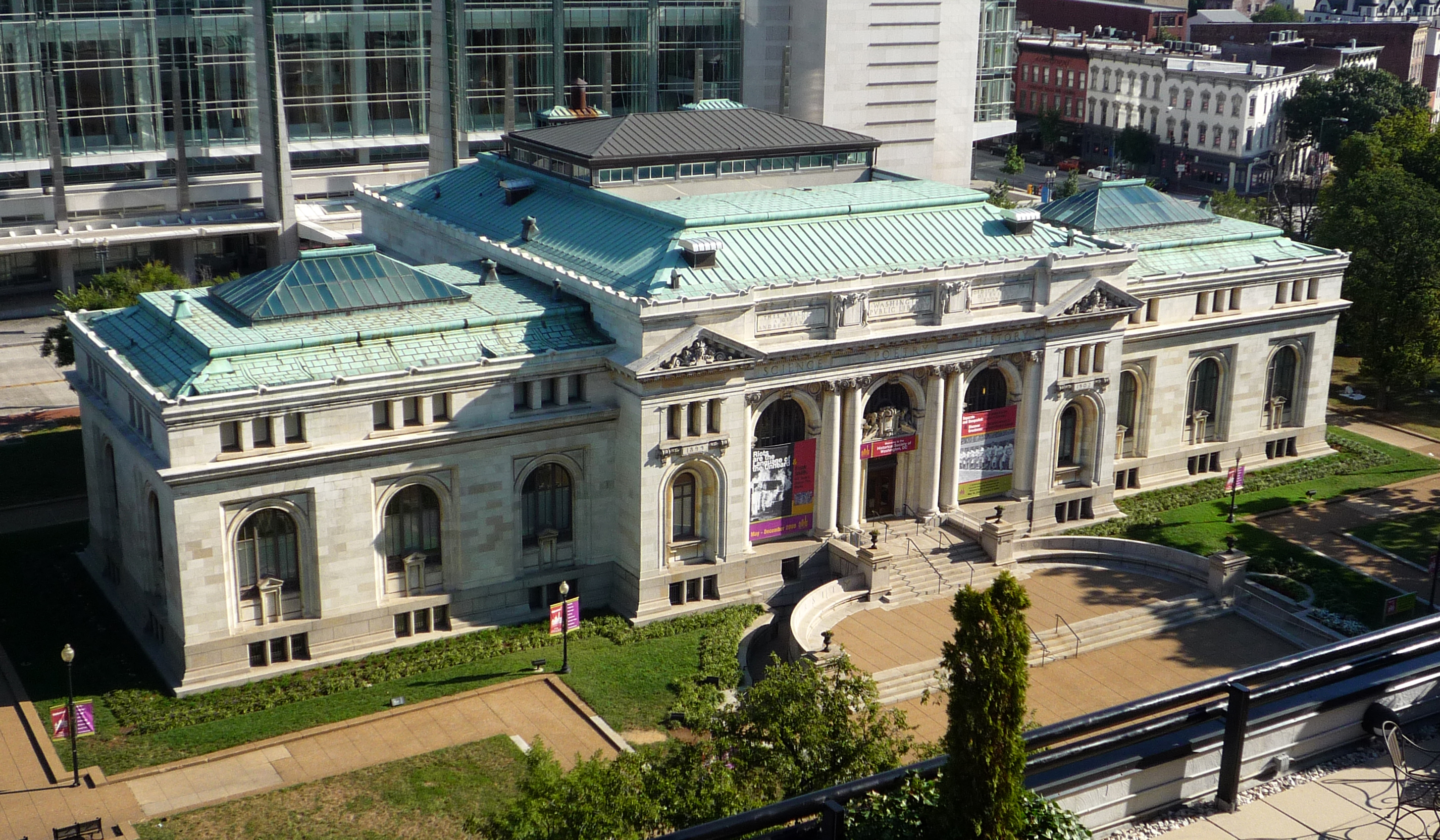|
Charles Henry Atherton
Charles Henry Atherton (June 24, 1932December 3, 2005), FAIA, was an American architect and former secretary of the U.S. Commission of Fine Arts from 1960 to 2004. Early life Atherton was born in Wilkes-Barre, Pennsylvania, on June 24, 1932, the son of Brigadier General Thomas Henry Atherton (18841978) and Mary Kidd Mish (19001981). His father was an accomplished architect whose notable works included the Pennsylvania Memorial in Varennes-en-Argonne in France. Atherton was educated at Princeton University, receiving both an undergraduate degree in architecture in 1954 and a Master of Fine Arts in architecture in 1957. Career After graduation he served in the U.S. Naval Civil Engineering Corps and worked as an architect for the Central Intelligence Agency for three years. He joined the United States Commission of Fine Arts (CFA) in 1960 as Assistant Secretary and was named Secretary in 1965 after Linton Wilson’s retirement. By 1987 he was referred to in the New York Times a ... [...More Info...] [...Related Items...] OR: [Wikipedia] [Google] [Baidu] |
Architect
An architect is a person who plans, designs, and oversees the construction of buildings. To practice architecture means to provide services in connection with the design of buildings and the space within the site surrounding the buildings that have human occupancy or use as their principal purpose. Etymologically, the term architect derives from the Latin , which derives from the Greek (''-'', chief + , builder), i.e., chief builder. The professional requirements for architects vary from location to location. An architect's decisions affect public safety, and thus the architect must undergo specialised training consisting of advanced education and a ''practicum'' (or internship) for practical experience to earn a Occupational licensing, license to practice architecture. Practical, technical, and academic requirements for becoming an architect vary by jurisdiction though the formal study of architecture in academic institutions has played a pivotal role in the development of the p ... [...More Info...] [...Related Items...] OR: [Wikipedia] [Google] [Baidu] |
National Endowment For The Arts
The National Endowment for the Arts (NEA) is an independent agency of the United States federal government that offers support and funding for projects exhibiting artistic excellence. It was created in 1965 as an independent agency of the federal government by an act of the Congress of the United States, U.S. Congress, signed by President Lyndon B. Johnson on September 29, 1965 (20 U.S.C. 951). It is a sub-agency of the National Foundation on the Arts and the Humanities, along with the National Endowment for the Humanities, the Federal Council on the Arts and the Humanities, and the Institute of Museum and Library Services. The NEA has its offices in Washington, D.C. It was awarded Tony Honors for Excellence in Theatre in 1995, as well as the Special Tony Award in 2016. In 1985, the NEA won an honorary Oscar from the Academy of Motion Picture Arts and Sciences for its work with the American Film Institute in the identification, acquisition, restoration and preservation of histo ... [...More Info...] [...Related Items...] OR: [Wikipedia] [Google] [Baidu] |
Architects From Pennsylvania
An architect is a person who plans, designs, and oversees the construction of buildings. To practice architecture means to provide services in connection with the design of buildings and the space within the site surrounding the buildings that have human occupancy or use as their principal purpose. Etymologically, the term architect derives from the Latin , which derives from the Greek (''-'', chief + , builder), i.e., chief builder. The professional requirements for architects vary from location to location. An architect's decisions affect public safety, and thus the architect must undergo specialised training consisting of advanced education and a ''practicum'' (or internship) for practical experience to earn a license to practice architecture. Practical, technical, and academic requirements for becoming an architect vary by jurisdiction though the formal study of architecture in academic institutions has played a pivotal role in the development of the profession. Origins Th ... [...More Info...] [...Related Items...] OR: [Wikipedia] [Google] [Baidu] |
2005 Deaths
This is a list of lists of deaths of notable people, organized by year. New deaths articles are added to their respective month (e.g., Deaths in ) and then linked below. 2025 2024 2023 2022 2021 2020 2019 2018 2017 2016 2015 2014 2013 2012 2011 2010 2009 2008 2007 2006 2005 2004 2003 2002 2001 2000 1999 1998 1997 1996 1995 1994 1993 1992 1991 1990 1989 1988 1987 1986 Earlier years ''Deaths in years earlier than this can usually be found in the main articles of the years.'' See also * Lists of deaths by day * Deaths by year (category) {{DEFAULTSORT:deaths by year ... [...More Info...] [...Related Items...] OR: [Wikipedia] [Google] [Baidu] |
1932 Births
Events January * January 4 – The British authorities in India arrest and intern Mahatma Gandhi and Vallabhbhai Patel. * January 9 – Sakuradamon Incident (1932), Sakuradamon Incident: Korean nationalist Lee Bong-chang fails in his effort to assassinate Emperor Hirohito of Japan. The Kuomintang's official newspaper runs an editorial expressing regret that the attempt failed, which is used by the Japanese as a pretext to attack Shanghai later in the month. * January 22 – The 1932 Salvadoran peasant uprising begins; it is suppressed by the government of Maximiliano Hernández Martínez. * January 24 – Marshal Pietro Badoglio declares the end of Libyan resistance. * January 26 – British submarine aircraft carrier sinks with the loss of all 60 onboard on exercise in Lyme Bay in the English Channel. * January 28 – January 28 incident: Conflict between Japan and China in Shanghai. * January 31 – Japanese warships arrive in Nanking. February * February 2 ** A general ... [...More Info...] [...Related Items...] OR: [Wikipedia] [Google] [Baidu] |
Luzerne County
Luzerne County is a County (United States), county in the Commonwealth (U.S. state), Commonwealth of Pennsylvania. According to the United States Census Bureau, the county has a total area of , of which is land and is water. It is Northeastern Pennsylvania's second-largest county by total area. As of the 2020 United States census, 2020 census, the population was 325,594, making it the most populous county in the northeastern part of the state. The county seat and most populous city is Wilkes-Barre, Pennsylvania, Wilkes-Barre. Other populous communities include Hazleton, Pennsylvania, Hazleton, Kingston, Pennsylvania, Kingston, Nanticoke, Pennsylvania, Nanticoke, and Pittston, Pennsylvania, Pittston. Luzerne County is included in the Wyoming Valley, Scranton–Wilkes-Barre–Hazleton Metropolitan Statistical Area, which has a total population of 555,426 as of 2017. The county is part of the Northeastern Pennsylvania, Northeast region of the commonwealth. On September 25, 1786, ... [...More Info...] [...Related Items...] OR: [Wikipedia] [Google] [Baidu] |
Forty Fort
Forty Fort was a stronghold built by settlers from Connecticut, on the Susquehanna River in what is now Luzerne County, Pennsylvania. Before the American Revolutionary War, both Connecticut and Pennsylvania claimed this territory, as Connecticut had laid claim to a wide swath of land to its west based on its colonial charter. These competing claims triggered the Pennamite-Yankee Wars but were resolved after the Revolutionary War when the federal government awarded the contested territory to Pennsylvania. The fort was a refuge for settlers during the Battle of Wyoming on July 3, 1778. Lieutenant Colonel Zebulon Butler's force of largely militia soldiers was defeated by a force of Loyalist soldiers from Butler's Rangers and their indigenous allies. Forty Fort capitulated the following day. The fort was reoccupied by the Americans later that year. Description Forty Fort was located in the Wyoming Valley on the west bank of the Susquehanna River in what is now Forty Fort Borough ... [...More Info...] [...Related Items...] OR: [Wikipedia] [Google] [Baidu] |
Washington National Cathedral
The Cathedral Church of Saint Peter and Saint Paul in the City and Episcopal Diocese of Washington, commonly known as Washington National Cathedral or National Cathedral, is a cathedral of the Episcopal Church. The cathedral is located in Washington, D.C., the capital of the United States. The structure is of Neo-Gothic design closely modeled on English Gothic style of the late fourteenth century. It is the second-largest church building in the United States, and the third-tallest building in Washington, D.C. The cathedral is the seat of both the presiding bishop of the Episcopal Church and the bishop of the Diocese of Washington. Over 270,000 people visit the structure annually. The Protestant Episcopal Cathedral Foundation, under the first seven bishops of Washington, erected the cathedral under a charter passed by the United States Congress on January 6, 1893. Construction began on September 29, 1907, when the foundation stone was laid in the presence of President ... [...More Info...] [...Related Items...] OR: [Wikipedia] [Google] [Baidu] |
Fellow Of The American Institute Of Architects
Fellow of the American Institute of Architects (FAIA) is a postnominal title or membership, designating an individual who has been named a fellow of the American Institute of Architects (AIA). Fellowship is bestowed by the institute on AIA-member architects who have made outstanding contributions to the profession through design excellence, contributions in the field of architectural education, or to the advancement of the profession. In 2014, fewer than 3,200 of the more than 80,000 AIA members were fellows. Honorary Fellowship (Hon. FAIA) is awarded to foreign (non-U.S. citizen) architects, and to non-architects who have made substantial contributions to the field of architecture or to the institute. Categories Fellowship is awarded in one of six categories: *Design *Practice management or technical advancement *Leadership *Public service *Volunteer work or service to society *Education and research History Membership in the American Institute of Architects was originally di ... [...More Info...] [...Related Items...] OR: [Wikipedia] [Google] [Baidu] |
American Institute Of Architects
The American Institute of Architects (AIA) is a professional organization for architects in the United States. It is headquartered in Washington, D.C. AIA offers education, government advocacy, community redevelopment, and public outreach programs, and collaborates with other stakeholders in the design and construction industries. History The American Institute of Architects (AIA) was founded in 1857 in New York City by a group of thirteen architects. The founding members include Charles Babcock (architect), Charles Babcock, Henry W. Cleaveland, Henry C. Dudley, Henry Dudley, Leopold Eidlitz, Edward Gardiner, Richard Morris Hunt, Detlef Lienau, Fred A. Petersen, Jacob Wrey Mould, John Welch (architect), John Welch, Richard M. Upjohn, and Joseph C. Wells, with Richard Upjohn serving as the first president. They held their inaugural meeting on February 23, 1857, and invited 16 additional architects to join, including Alexander Jackson Davis, Thomas Ustick Walter, Thomas U. Walte ... [...More Info...] [...Related Items...] OR: [Wikipedia] [Google] [Baidu] |
Columbia Historical Society
The Historical Society of Washington, D.C., also called the DC History Center, is an educational foundation dedicated to preserving and displaying the history of Washington, D.C. The society provides lectures, exhibits, classes, and community events. It runs a museum, library, and publishes the journal ''Washington History''. It had been named The Columbia Historical Society from its founding in 1894 until 1988. The society's home is the Carnegie Library of Washington D.C., a Beaux-Arts building in the center of Mount Vernon Square in Washington. It was built in 1902 to be District of Columbia Public Library, one of the many Carnegie libraries. The building is open to the public from Monday through Sunday 10am to 5pm. Visitors can tour the exhibits and use the society's Kiplinger Research Library, which has books, maps, photographs, and other materials relevant to the history of the city. ''Washington History'' The society publishes a peer-reviewed academic journal ''Washing ... [...More Info...] [...Related Items...] OR: [Wikipedia] [Google] [Baidu] |




